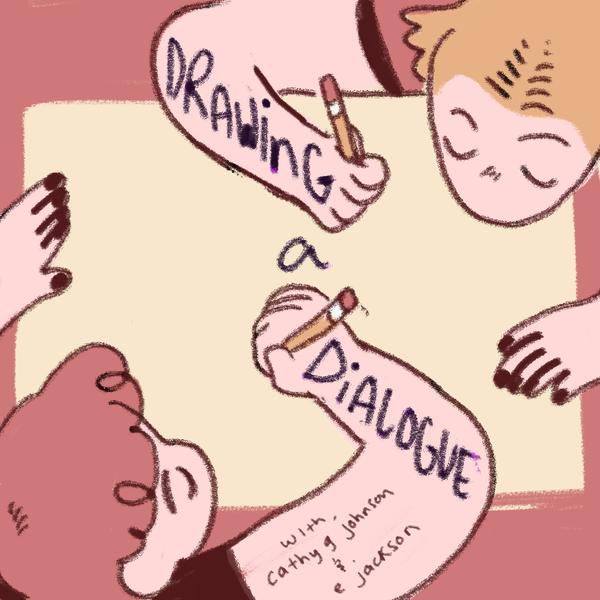
Drawing a Dialogue
Cathy G. Johnson + e jackson
A podcast discussing comics in historical + educational contexts. Updates first Friday of every month, visit comicarted.com for more.
- Words in Pictures 2025: Comics by Rhode Island Teens2 December 2025, 12:49 pm
- 1 hour 2 minutesDrawing a Dialogue, Episode 62: Class Consciousness
Episode 62: Using a Marxist lens, remus and Cathy discuss class consciousness in the comic book industry. remus talks about class under Capitalism, sharing definitions of the proletariat, bourgeoisie, and the petite bourgeoisie.
Citation: https://comicarted.com/blog/2025/11/7/drawing-a-dialogue-episode-62
7 November 2025, 6:00 am - Promoting Literacy with Comic Art Education
Comic art education is an incredibly effective tool to promote literacy in young people. Recently I had a 10 year-old student say to me: “I read that graphic novel quickly because it didn’t have a lot of words.” And I said, “Oh, but you aren’t just reading the words, you are also reading the images!”
Comic books use two types of literacy: Reading and Visual. Visual literacy can be defined as the ability to effectively interpret and create an image. This is a vital skill for young people to develop in our world filled with images! So while it seems like reading should take our young people longer, the skill of interpreting information from images quickly is a powerful and important skill to grow.
Lesson Plan Idea: Adaptation
Do you have a learner who is only interested in reading graphic novels, but you would like to encourage them to read prose books as well? Here are some different ideas and approaches you can take in your classroom to get your readers to branch out!
Comic page to prose page
Ask your reader to adapt a page from a comic book into prose. Use these questions to prompt the exercise:
What information is the text telling the reader?
What information are the images telling the reader?
How can you translate the images into prose?
Prose page to comic page
Ask your reader to adapt a page from a prose book into a comic book page. Use these questions to prompt the exercise:
What information is important to keep as words?
What information can we communicate through images?
How can our character’s feelings be seen on the outside?
How can backgrounds and objects share information with the reader?
Examples and References
There are many graphic novels available that adapt classic literature. Here are a few:
Kindred (1979) by Octavia E. Butler, graphic novel adaptation by John Jennings and Damian Duffy (2018).
The Great Gatsby (1925) by F Scott Fitzgerald have a number of adaptations, including by K Woodman-Maynard (2021).
To Kill a Mockingbird (1960) by Harper Lee, graphic novel by Fred Fordham (2018).
Anne Frank's Diary (The Diary of a Young Girl) by Anne Frank, graphic novel adaptation by David Polonsky and Ari Folman (2018).
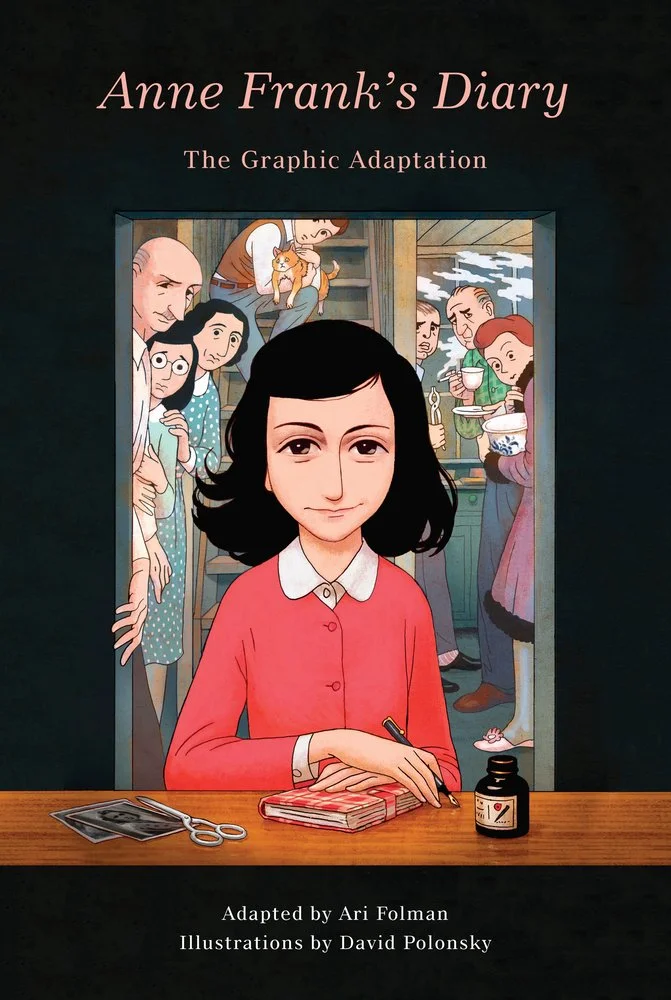

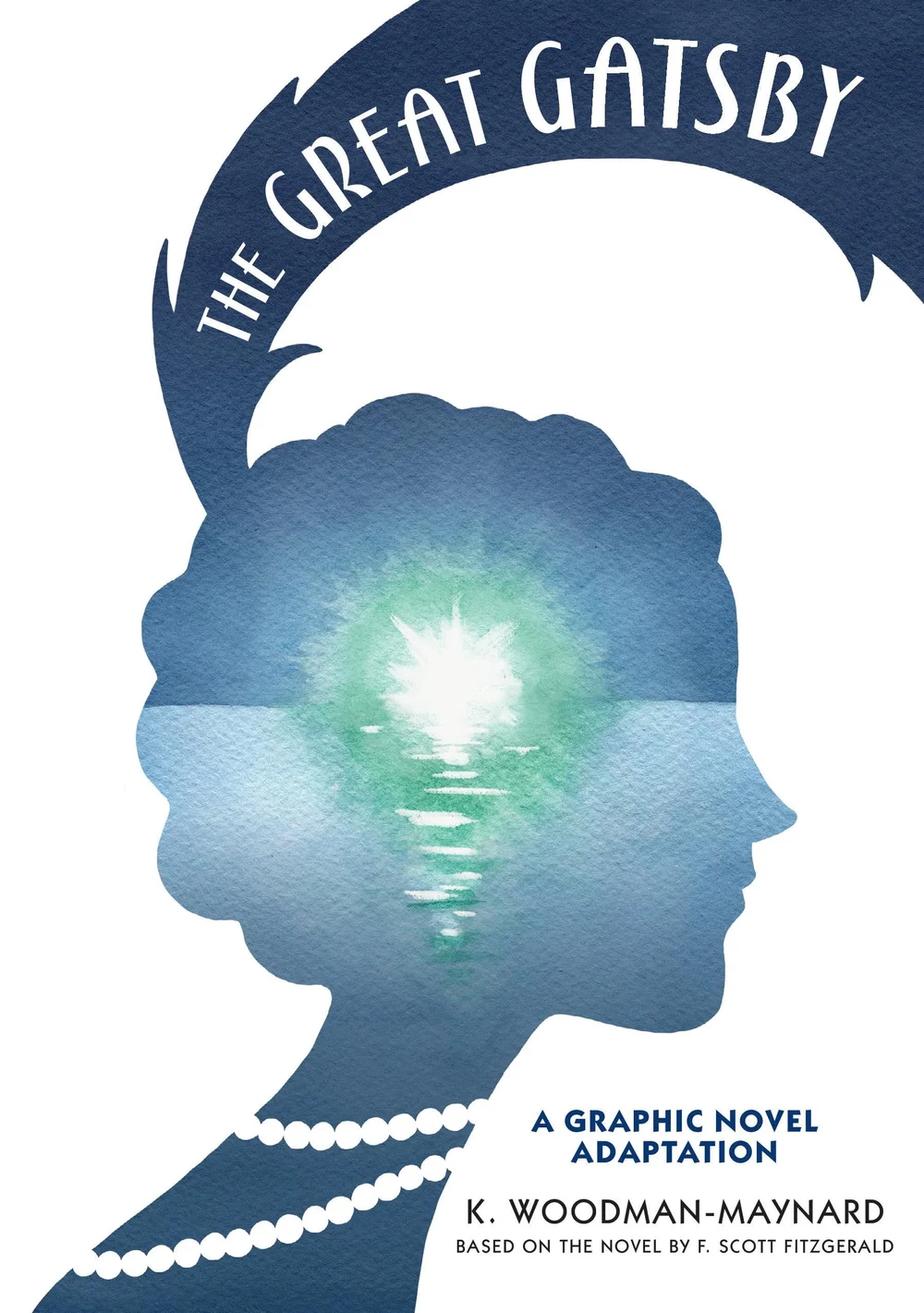
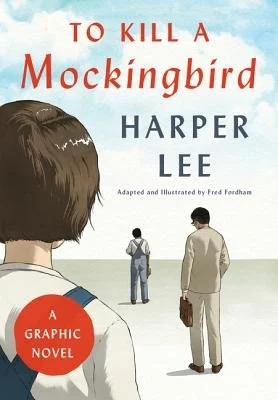
27 October 2025, 1:34 pm - 1 hour 10 minutesDrawing a Dialogue, Episode 61: Professional Practices in Comics
Episode 61: Cathy and remus catch up after a summer break! Cathy shares the details of her career transition into more higher ed teaching, including her new courses in the Visual Narrative MFA program at Boston University. She then goes into depth about her new Professional Practices class at the Center for Cartoon Studies. What are the professional skills that cartoonists need in 2025? How can we reevaluate our relationship to “success”? What do comics students actually need to know??
Citation:
https://comicarted.com/blog/2025/9/5/drawing-a-dialogue-episode-61
5 September 2025, 5:00 am - Photos: Comics are Liberation! Keynote Speaker at Rhode Island Library Association Conference
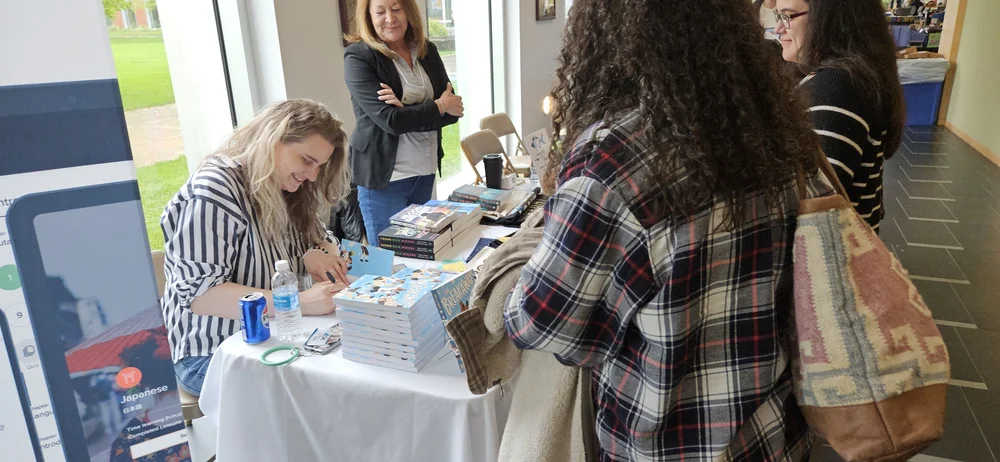
This past May I was honored to visit the Rhode Island Library Association Conference as their Keynote Speaker! It was a pleasure to meet so many amazing library professionals and talk about the incredible power that comic books are able to offer young people.
My keynote speech, titled “Comics are Liberation!,” was 45 minutes long with 75 original hand drawn slides, with additional time allotted for Q&A. If you are interested in inviting me to your conference to discuss being a comic book author and the tremendous power of teaching comic book creation to youth, please reach out!
View fullsize
View fullsize
View fullsize
View fullsize
View fullsize
View fullsize
View fullsize
View fullsize
View fullsize
View fullsize
View fullsize
View fullsize
View fullsize
View fullsize
View fullsize
View fullsize
View fullsize
View fullsize
View fullsize
View fullsize
View fullsize
View fullsize
View fullsize
View fullsize
View fullsize
View fullsize
View fullsize
View fullsize
View fullsize
View fullsize
View fullsize
View fullsize
View fullsize
View fullsize
View fullsize
View fullsize


26 August 2025, 4:28 pm - 1 hour 29 minutesDrawing a Dialogue, Episode 60: What's up With AI?
Episode 60: On this episode of Drawing a Dialogue, remus and Cathy discuss AI technologies. What is the history of artificial intelligence? What are the current conversations surrounding AI, and what is it actually capable of?
Citation:
https://comicarted.com/blog/2025/7/11/drawing-a-dialogue-episode-60
11 July 2025, 5:00 am - Freedom to Read Rhode Island has PASSED!
The Freedom to Read legislation has passed in the state of Rhode Island! Back in March I had the pleasure of speaking at a press conference in support of passing the bill, you can read that blog post here.
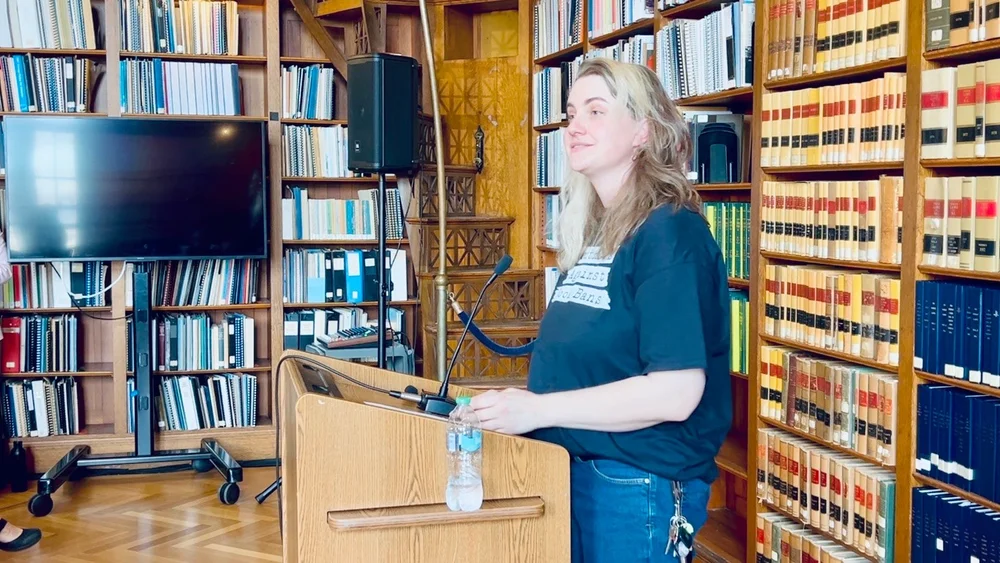
Information on the bill from The Author’s Guild:
The Freedom to Read Act establishes vital safeguards that will:
Protect authors’ rights: Authors, publishers, and booksellers now have the right to sue government entities that engage in censorship, with potential damages of up to $5,000 per censored work .
Shield library professionals: Librarians and educators receive immunity from civil and criminal liability for good-faith actions performed in their professional duties.
Establish clear standards: The law prohibits censoring materials based solely on the origin, background, or views of the author, consistent with longstanding Supreme Court precedent.
Ensure due process: Professional standards and clear procedures replace vague and arbitrary removal decisions.
Cited from https://authorsguild.org/news/ag-celebrates-rhode-island-freedom-to-read-act/
3 July 2025, 3:09 pm - 50 minutes 24 secondsDrawing a Dialogue, Episode 59: The Studentcast!
Episode 59: The students speak out! Cathy interviews the Boston University Visual Narrative MFA graduating class of 2025. George, Joy, Francis, Sam and Jade share what it’s like to be a student in a comic masters program, important lessons they learned, and what future comics students should know. And most importantly…what’s Cathy actually like as a teacher??
Citation: https://comicarted.com/blog/2025/6/6/drawing-a-dialogue-episode-59
6 June 2025, 5:00 am - Comics are Liberation! Keynote Speaker at Rhode Island Library Association Conference!


I am proud to share that I will be the keynote speaker at the Rhode Island Library Association Conference 2025! My speech is titled “Comics are Liberation!,” and I’ll be addressing the incredible power of teaching comic book making to children. Register today!
Here are some sample images from my slideshow:
 6 May 2025, 7:02 pm
6 May 2025, 7:02 pm - Comic Workshop at the Providence Public Library!
Last year I had the pleasure of teaching a 4 week-long comic drawing workshop series at the Providence Public Library, and I’m so happy to be returning again this year!

Young Creators: Comic Book Drawing Workshop
Do you love to draw? Tell stories? Create your own cool characters? Comic books are for you! In this comic book drawing workshop series, students will have fun playing silly drawing games, create new worlds, and learn all about the steps of creating their own comics. All levels of experience are welcome! The workshop will be run by Cathy G. Johnson of Comic Art Ed!, Providence-based writer and artist of the graphic novel THE BREAKAWAYS!
Registration is required and space is limited. This program is for ages 7 - 12. The workshops will be held in the Workshop on the Ground Floor. Participants are expected to attend all 4 workshops.
Saturday, April 26, 2025 - May 17, 2025
10:00am - 12:00pm
Here are some pictures from last year’s comics camp!
View fullsize
View fullsize
View fullsize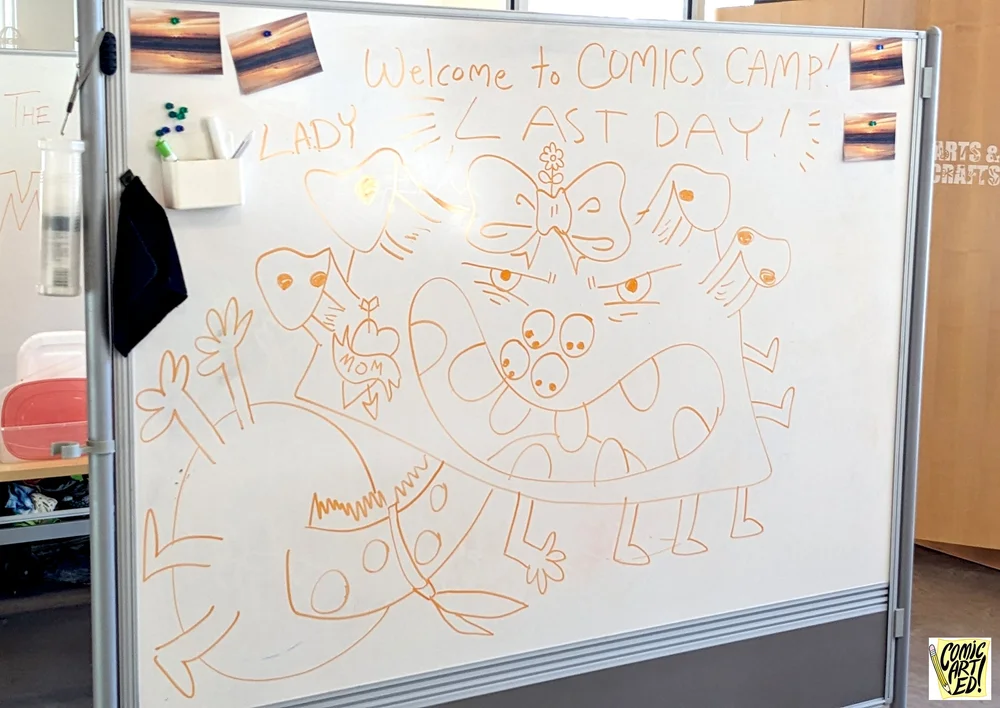
View fullsize
View fullsize
View fullsize
23 April 2025, 3:15 pm - My Teaching Philosophy for the Art Studio
As an art educator since 2012, I have written many iterations of my teaching philosophy. Spread throughout this website are my teaching philosophies when it comes to bringing comic book creation into the art classroom. Below I am happy to share a more generalized art education philosophy from me. This mindset is applicable to any classroom that I enter. It contains references to many important mentors that I’ve had, and has also been inspired by the many thousands of students that I’ve taught.
-Cathy G. Johnson
Art education is a liberatory practice. When I teach, I want my students to discover. Through their art materials, students are observing, deeply engaging with the world around them. My students are documenting every detail of their subject, to ultimately know the world on an intimate level. Creating is a living memory, chronicling our past with breathing images. Art making is also storytelling, images propelling us forward with bravery and sincerity. In my studio, students are developing new processes for their artistic voices that will stick with them for the rest of their lives. I believe art is a labor for community and oneself, to retrieve and discover new. Something magical happens in the art studio that is irreplicable in any other setting.
In my “Starting a Sketchbook: Techniques and Practice” course, we explore these various dimensions of drawing. I begin every meeting with a series of sketchbooking exercises, which are, as Whitney Sherman puts it: “calisthenics for your hands and mind, to help you break away from your norm to create a new way of thinking and mark making, and to give you permission to explore and make mistakes." Every week we explore different realms of drawing, including observation, memory, and storytelling. Students learn about new drawing materials through demonstrations with graphite, charcoal, ink, watercolor, and more. I provide examples by sharing other artists’ work as well as my own, to show how a dedication to drawing can evolve into a lifetime of artistic pursuit. We end our time together by developing new artistic processes for ourselves and sharing them with each other in our beloved community.
The studio is an equitable space. My teaching style uses the depths of process to produce the product. I teach through demonstration and exploration, introducing students to new concepts regularly, and asking them to build upon the previous day’s work. Students make discoveries for themselves through personal iteration. I am the concierge of their learning, guiding them on a personal artistic journey, one that will ultimately end in places no one could predict. Students are the center of my studio, and I believe in being a reliable conduit for their learning. My ultimate goal is for my students to leave my courses not only with a portfolio of work, but a clear direction to continue their practice forward.
I advance my field by sharing new scholarship in many different settings. Publishing articles is an important part of my practice, both through academic publication as well as my own blog and podcast. Attending conferences regularly throughout North America keeps me knowledgeable in my field and engaged with my students. I also continue to teach, not only at institutions like Boston University and the Center for Cartooning Studies, but throughout my community in public libraries and K-12 schools. I believe in making my research as community engaged as possible.
Reflecting upon my teaching career, the guiding principle has always been student empowerment and self-actualization. My CV reflects my eclectic background and dedication to principles. Artmaking is valuable no matter what age we are. What art teaches us is the value of letting go, of being brave, of being sincere with ourselves. The studio leads us to the discovery of our truest selves.
15 April 2025, 1:55 pm - More Episodes? Get the App